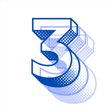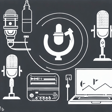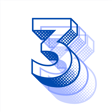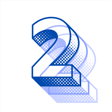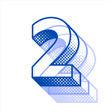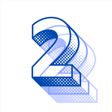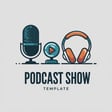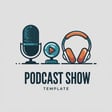Become a Creator today!Start creating today - Share your story with the world!
Start for free
00:00:00
00:00:01

ep2: pp1 youtube-ayrshare-uploads title
Transcript
00:00:00
Speaker
Okay, hello and welcome back to the Deep Dive. Today we've got quite a stack of sources here on the table. Some really interesting industry reports, platform deep dives, and so bunch of notes pulled from user perspectives. And our mission, as always, is just to dive right in, unpack all this, and pull out the most the most important nuggets of knowledge, or maybe just some surprising insights ah for you. And today we're tackling a world that so many of us and inhabit, ah whether you're making shows or just listening, the state of podcasting here in 2025.
00:00:28
Speaker
And specifically, we're going to look at how the tools available are helping creators you know navigate this incredibly booming and rapidly evolving landscape. We'll be exploring one key player in detail, Zencast.
00:00:40
Speaker
That's pronounced Zadiskost. That's right. We've really synthesized ah quite a bit of data here. We've looked at reports like Edison Research's Infinite Dial 2025, global numbers from Data Reportals, some workflow data from Buzzsprout, and really dug into um platform details and, you know, what users are saying.
00:00:56
Speaker
The goal here is really to give you, whether you're thinking about starting a show already knee-deep in production, or just, ah you know, a listener curious about how these shows actually get made, a clear picture of what's happening in podcasting right now and, know, how tools like Zencastr Sona's case start shaping that reality.
00:01:13
Speaker
Yeah, and it really yeah it does matter, doesn't it? Podcasting feels like it's everywhere now. It's certainly not just a niche hobby anymore. Maybe you're creator wrestling with making your show sound professional, or ah you know maybe you're struggling with that daunting editing process, or maybe you're just listening to your favorite show and wondering, gosh, how do they get that amazing sound quality when the host is in you know California and the guest is in ah London?
00:01:36
Speaker
We're to look at the big trends that 2025 podcasting what it is And the tech that's making it possible, ah specifically how Zencastris' case fits right into that picture. OK, let's some let's unpack this. We're going to start with the big picture.
00:01:50
Speaker
What is the world of podcasting actually look like here in 2025, according to these reports? Well, the first thing that just jumps off the page from the Edison Research Infinite Dial 2025 report is just the sheer scale.
00:02:02
Speaker
but the data shows us is that 70 percent of americans age 12 and older have ever listened to a podcast i mean that's a huge number right it really shows you how mainstream it's become but perhaps even more significant is uh the regular listening 55 percent of americans 12 plus are listening monthly and what was really interesting in the data was seeing that this is up quite significantly from 2024 was 47 just a year ago That 8 percentage point jump in 12 months, it really um underscores how quickly the audience is still growing.
00:02:31
Speaker
And um the picture gets even bigger when you consider different warmets. The reports tell us that in total, 73% of Americans, that's roughly 210 million people, have consumed a podcast in either audio or video form. It's ah it's not just about audio anymore, you know.
00:02:45
Speaker
It's truly become a multimedia experience for for a lot of people. Oh, that that video point is so key right now, isn't it? Here's where it gets really interesting. The data confirms what we've probably all been seeing. If you spend any time online,
00:02:58
Speaker
Video podcasting is massive. We saw that 51% of Americans have watched a podcast. Maybe you've seen clips or full episodes on YouTube. And ah nearly half, 48%, have actually done both. They've listened and they've watched shows.
00:03:10
Speaker
And this trend um is so significant that the data tells us YouTube is now the most used platform for podcast consumption in the U.S. I mean, think about that. The data specifically mentions that a full one third of weekly listeners say they use YouTube to watch or listen to podcasts.
00:03:27
Speaker
That is ah that's a game changer for how creators need to think about their content and where it lives. It's not just about getting into Apple or Spotify anymore. It really is a fundamental shift in how people access this content and um broadening that view globally. Data portal data in the report shows that twenty two point one percent of all online adults worldwide listen weekly.
00:03:47
Speaker
What's fascinating here is That figure is actually higher than the percentage of online adults globally who report following influencers on social media. Podcasts are a significant ah piece of global media consumption.
00:03:58
Speaker
The data does note, however, that um adoption varies quite a bit by country. If we connect this to the bigger picture, it's a global phenomenon. Absolutely. But the penetration isn't uniform. For instance, countries like Indonesia and Mexico are leading the way in weekly listenership among connected adults with figures like forty two point six percent and forty one point eight percent, respectively.
00:04:17
Speaker
Contrast that with ah lower usage in parts of Asia, like Japan, where it's around 4.9%. This global variation really highlights different stages of market maturity or maybe ah cultural preferences for the medium. You know, it's not a one size fits all global market yet.
00:04:30
Speaker
And um bring it back to the listeners themselves, the data gives us like a little demographic snapshot of who's tuning in. The reports indicate that women, especially those aged 25 to 34, make up the largest group of listeners right now.
00:04:42
Speaker
And people aren't just, you know, sampling for a few minutes. They're really investing time in podcasts. The average listening time is pretty high, about 52 minutes per day per listener on average, according to these sources.
00:04:53
Speaker
People are clearly finding um a lot of value in dedicating significant chunks of their day to this medium. ah you know It's not passive listening for an hour. This massive growth in audience and consumption, it naturally leads to growth on the production side.
00:05:09
Speaker
Which, ah this raises an important question. How are creators actually keeping up with this demand for content and also navigating this increasingly complex technical landscape that includes video and ah multiple platforms?
00:05:21
Speaker
The reports point out that podcasters are increasingly turning to technologies, specifically AI. In 2025, we saw that 57% of podcasters report using AI software for something, whether it's recording, editing or promotion.
00:05:34
Speaker
That's a pretty significant adoption rate for new technology. But um while AI is growing rapidly, Basic equipment is still absolutely fundamental. The Blue Yeti microphone is mentioned as the single most popular mic out there, and 70% of podcasters are using headphones when recording. So you still need that good foundational gear, ah you know, to get good source audio.
00:05:53
Speaker
Episode lengths, they vary quite a bit. Buzzsprout data shows that 20-40 minutes is still the most common length, making up about 30% of episodes. However, we also see a trend towards much shorter shows, with 20% of new shows aiming for less than 10 minutes.
00:06:05
Speaker
This suggests creators are really experimenting with formats to fit different listening habits, perhaps, ah for social platforms. Now, despite this massive number of shows out there, mean, Apple Podcasts alone lists 2.8 million podcasts with 106 million episodes as of early 2025.
00:06:22
Speaker
The reports point out that only a small minority are actually active. Just 436,240 were active on Apple as of January 2025. That's only about 15% of the listed shows. This is a critical point for anyone thinking of starting a show or already running one. It suggests a really high churn rate.
00:06:40
Speaker
The data explicitly states that a staggering 90% of shows end before episode three. fifty percent 90%! Think about that. For every 10 shows that start, only one makes past the very beginning. That's a brutal reality for anyone trying to build an audience and you know find their voice. Why does this happen? Is it creative burnout? Is it the sheer technical barriers?
00:06:56
Speaker
Or just um you know the complexity of production, distribution, and promotion in this modern landscape. This brutal churn rate, this difficulty staying active, really sets the stage for understanding why tools are becoming ah more specialized and powerful, which leads us directly to Lancaster, Soundless Casts,
00:07:12
Speaker
Yeah, that 90% churn number is um frankly kind of shocking when you hear it alongside the massive audience growth numbers, right? It shows there's a huge desire for podcasts, but also a massive barrier to actually making it work as a creator. Yeah.
00:07:25
Speaker
So what does all that mean? Podcasting is booming. Audiences are massive and growing rapidly. Video is a huge part of it. AI is you know starting to become essential for production. But despite all that, staying active and consistent seems to be a real challenge with so many shows just starting and then quickly disappearing.
00:07:41
Speaker
This really it really highlights the need for tools that can simplify things. It sets the stage for understanding why something like Zencast or Zestcast is ah so relevant in this environment. Exactly. Zencastr, as described in the reports, really positions itself as an all-in-one platform.
00:07:57
Speaker
It's browser-based for recording and publishing. Its core promise is to be your all-in-one remote podcast studio, aiming to bundle all those key functions that used to require, you know, four or five different pieces of software into one comprehensive suite.
00:08:12
Speaker
Okay, let's um let's unpack this. Let's really dive into the specific features Zencastr highlights based on what ah what we saw in the material from their website in 2025. First up, high-quality remote recording. How does it actually pull that off, especially when you know guests might have questionable internet?
00:08:27
Speaker
Well, this is um one of the core technologies for remote recording platforms. The sources detail that Zencastr records each participant's audio locally. And this is absolutely crucial. It means that even if someone's internet connection drops out for a moment or it gets glitchy during the recording, the audio and video files being recorded directly on their computer won't have those dropouts.
00:08:47
Speaker
You get clean source files regardless of temporary internet hiccups. It also specifies the quality specs they offer. Free plans get a standard 128 kilopies audio dot. But paid plans unlock these really pristine ah professional grade 16 bit 48 kilohertz WAV files that meets broadcasting standards, giving you lots of flexibility in close production.
00:09:09
Speaker
And for video, which we know is huge in 2025, it supports 4K video recording from both the hosts and guests cameras, assuming that cameras support that resolution, of course. And for post production, the reports note that all these local recordings are automatically timestamped and synchronized in the cloud. You get separate tracks for every speaker, which is just um essential for any serious editing. It makes it so much easier to isolate voices or fix issues. Ah, okay, so you don't have to worry about someone's shaky internet connection ruining the entire recording because it's saving that high-quality file right there on their machine.
00:09:41
Speaker
And you get these, like, super high-quality audio files and separate audio and video tracks for everyone automatically. that That definitely makes the editing process, um you know, so much easier, especially for complex interviews with multiple people.
00:09:55
Speaker
It saves, like, hours of trying to manually sync things up. Precisely. It streamlines that foundational step. Moving on to ah accessibility, the sources highlight browser and mobile access, which is a pretty big deal, especially for guests.
00:10:08
Speaker
For desktop recording, it runs right there in popular browsers like Chrome, Edge or Brave on both PCs and Macs. And there's absolutely no software download needed for the desktop experience.
00:10:19
Speaker
This is a huge advantage, especially for guests who might not be tech savvy or just, um you know, don't want to install yet another application just for one recording. They can just click a link and join. Now, there is an optional iOS app available for iPhones and iPads. This lets creators um record on the go using their phone's built-in camera, which is often quite good quality now, you know, especially on newer phones supporting 4K.
00:10:42
Speaker
The app even gives mobile users manual controls for things like ISO, white balance, and zoom, effectively bringing ah like a little studio to you on your phone. The platform also supports a significant number of participants, which is key for panel shows or interviews with multiple guests. Up to 12 people total, that's one host, plus 11 guests on paid plans.
00:10:59
Speaker
And again, crucially, no downloads required for those guests. Wow, okay, so you can record with a guest virtually anywhere, on almost any computer they have, or even on your phone. And you can get up to 12 people on a call simultaneously. that's ah That's pretty incredibly flexible for different show formats.
00:11:16
Speaker
And yeah, that guest experience is is such a big deal. Nobody wants to try and troubleshoot software installs with someone who's just doing you a favor by being on your show. It definitely lowers the barrier for participation.
00:11:27
Speaker
But this next feature is where Zencastr really leans into the 2025 trend of AI we discussed earlier, AI-powered editing. The sources describe an AI driven text based editor for both audio and video. I mean, how does that work? It provides automatic transcripts reporting about 99% accuracy that turn your voice tracks into ah editable text documents.
00:11:51
Speaker
And the workflow is honestly revolutionary for many creators. You simply edit or delete words in the transcript just like you were editing a document. And the corresponding audio and video sections are cut automatically. The reports say it makes post production as easy as editing a document.
00:12:05
Speaker
On top of that, it includes other AI assistants built right in, like background noise reduction, automatic leveling of speaker volumes, and seamless syncing of tracks. The key benefit highlighted here is speed.
00:12:16
Speaker
Transcripts are generated quickly, often in the background while you're still recording or finishing up, and edits apply instantly. This ah the saves creators a tremendous amount of time in post-production compared to traditional waveform editing.
00:12:26
Speaker
Here's where it gets really interesting. Editing your audio and video just by editing text on a page. No more wrestling with complicated waveform visuals or video timelines. And it handles all that back-end stuff, the syncing, the leveling, the cleanup, automatically.
00:12:41
Speaker
ah For any producer or editor who's spent hours trimming audio or trying to line up video, that sounds like a massive, massive time saver. It's like the AI is doing the most peteous grunt work for you. It fundamentally changes the editing workflow for those who adopt it.
00:12:55
Speaker
And taking that AI power even further, the sources highlight Zencaster's AI clipping and social sharing feature. It features an AI clip tool that with this one click uses AI to identify the most compelling moments in a longer recording like key quotes or ah punchlines.
00:13:11
Speaker
and automatically turns them into short attention grabbing clips specifically optimized for social media platforms. These clips come ready to post. They're optimized for social formats. They include dynamically generated attention grabbing titles. They have automatic captions already burned in, which is crucial for social video where people watch without sound initially, and they're created in dynamic formats like horizontal and vertical video clips with subtitles perfect for TikToks, Instagram Reels, YouTube Shorts.
00:13:36
Speaker
And the platform integrates directly with multiple social platforms, offering ah seamless posting to Facebook, Instagram, LinkedIn, TikTok, Twitter and YouTube directly from the Zencastr workflow. You don't even need to download the clip and then re-upload it elsewhere.
00:13:49
Speaker
So you record a long interview or, you know a detailed discussion like this, hit a button and Zancaster just spits out ready-made TikToks, Instagram reels, YouTube shorts with captions already there.
00:14:00
Speaker
And you can post them to all your different social channels right from the same platform. That, um, that is huge. That dramatically helps creators with distribution and promotion, which, you know, is absolutely crucial for growing a show and finding new listeners in 2025.
00:14:14
Speaker
That integrated social workflow just sounds incredibly powerful for discoverability. It truly streamlines a process that usually takes hours and requires separate editing software and social media management tools.
00:14:26
Speaker
Now, unlike many remote recording tools that just, you know, give you files and say good luck, the reports state that Zencastr includes unlimited hosting and distribution in every plan.
00:14:36
Speaker
This means you get unlimited uploads, downloads and storage for both audio and video episodes. You don't have to worry about hitting storage limits or paying extra as your library grows. And you get one click publishing to all the major podcast platforms, Apple Podcasts, Spotify, Google Podcasts, YouTube and others.
00:14:53
Speaker
Crucially, it natively supports video podcast RSS feeds, which is essential for getting your video show listed correctly in places like Apple Podcasts and Google Podcasts. You can upload or schedule episodes and manage everything from a single dashboard.
00:15:06
Speaker
It also provides an embeddable player you can put on your website and supports dynamic ad insertion for monetization right within the platform. Okay, wait, so I can record a multi-person interview in the browser with local high quality files, edit the audio and video by just editing the transcript, automatically create perfect social media clips from it, and then publish my entire podcast, including the video feeds, to literally every major platform.
00:15:29
Speaker
And it hosts it with unlimited storage, all within one place. that ah That really, really changes the game for simplifying the entire workflow from creation all the way through to distribution. It truly is aiming to be an all-in-one solution.
00:15:42
Speaker
It's definitely trying to provide that complete ecosystem under one roof. On top of that, the sources note that Zencastr includes built-in analytics and management features. You get data on your audience device, location platform, episode downloads, and um listener retention figures.
00:15:58
Speaker
And the dashboard, importantly, consolidates all your tasks, recording, editing, scheduling, and those analytics. The reports explain why this matters. These insights help podcasters understand who their audience is where they're listening, what they like, allowing them to tailor their content more effectively and also providing valuable data for potential sponsors.
00:16:18
Speaker
It's about having that streamlined workflow and all your shows information accessible through one interface. Understanding your audience is absolutely key for growing a show and, you know, being able to connect with brands if you want to monetize. Yeah.
00:16:30
Speaker
And having all your info, your recordings, your edits, your publishing schedule, your stats all in one dashboard. That just seems, um dare I say, it's simple, refreshingly simple rather than, you know, having to log into five different services or spreadsheets.
00:16:43
Speaker
And going back to those text-based features, the sources reiterate the importance of transcripts and accessibility. The automatic, 99% accurate transcripts generated for every recording aren't just powering the editor and the clipping tools, they also inherently make your podcast more accessible to a wider audience, including those who are deaf or hard of hearing or who prefer to read along.
00:17:04
Speaker
What's also um useful here is the flexibility they mention. You can upload any audio or video file, even ones recorded outside of Zencastr, and get a rapid transcription.
00:17:15
Speaker
this ah This eliminates the need for time-consuming manual transcription or using a separate service just for that step, which is a huge benefit for many producers and editors. Accessibility is is so incredibly important. Making shows available via text is essential.
00:17:29
Speaker
And saving time on transcription, whether it's the Zencast recording or something you did somewhere else, is a huge bonus for any editor or producer oh that frees up so much time you could be spending on you know making more content.
00:17:41
Speaker
For shows with multiple hosts or production teams, Zencaster supports team collaboration. The reports mention that users can invite co-hosts or producers into their workspace and assign different role-based permissions, controlling what they can see or do.
00:17:55
Speaker
For larger productions, team members can share projects, library assets, and even divide editing duties within the platform, working on the same source material. The benefit is clear. Solo podcasters can easily scale up by adding collaborators and studios can coordinate multiple shows and different roles more efficiently, all within one account structure.
00:18:14
Speaker
For anyone working with a co-host or um maybe hiring freelance editor or a social media manager, having that built in collaboration feature must be ah super helpful. No more messing around with like complicated shared cloud drives or trying to send massive audio and video files back and forth, which is just yeah painful.
00:18:31
Speaker
Finally, the sources note Zencasters support for monetization. It operates a creator network that podcasters can um opt into to access various ad programs and sponsorship opportunities.
00:18:43
Speaker
The reports highlight that this network is non-exclusive, importantly, meaning creators maintain full control over their show and are free to work with other partners or ad networks as well. The benefit is streamlining the path from creating great content to generating income, potentially connecting shows directly with ah relevant advertisers. Turning your passion project into, you know, something that can actually support itself or even be a career, that's the dream for many creators, right? And being able to explore ad options right there within the platform, but still having the control to pursue other opportunities, that's ah that seems like a smart, creator-friendly approach.
00:19:18
Speaker
The overall user experience is really central to Zencastr's pitch, according to the sources. They quote an industry article saying, and I think this really sums it up, you don't need to be an audio engineer to achieve great results. Simply send a link to your guest, hit record and let Zencastr handle the rest.
00:19:34
Speaker
The interface is described as clean and intuitive, featuring things like one click recording and processing of files happening in the background so you're not waiting. The source summarizes it as um a powerful combination of features and simplicity. And it's not just Zencastr saying this themselves, right?
00:19:50
Speaker
The sources include user testimonials and case studies. It mentions marketing guru Seth Godin calling Zencastr the um gold standard for recording audio conversations for podcasts, specifically praising its unmatched quality.
00:20:03
Speaker
Podcaster Sam Harris also notes that Zencastr lets him record 99% of my podcast interviews remotely. which he says ensures that they actually happen because he doesn't have to rely on guests having perfect Internet setups or technical skills.
00:20:16
Speaker
Harris says he can't imagine podcasting without it, highlighting the platform's reliability in his workflow, which is know pretty high praise. And sources mentioned the Fall Into Tech podcast case study, where the host apparently used Zencastr's AI tools, which they refer to as Zen AI,
00:20:32
Speaker
streamline production and scale up their number of episodes much more efficiently. These aren't just features on a website, these are um real people actually using the tool in the world to make the shows happen successfully and, ah you know, scale.
00:20:45
Speaker
So the overall takeaway on Zencaster from the source material is that it aims to deliver broadcast quality audio and video results in a package that's designed to be easy for creators to learn and use. Its browser-based model is a huge advantage for guests, meaning no technical setup hassle on their end, and it really does aim to put everything you need in one app.
00:21:04
Speaker
Record, edit via text, clip for social media, publish, and track performance. That promise of end-to-end convenience is highlighted repeatedly. Okay, so that gives us a really detailed look at Zencastra's CSCAS code. Of course, like as the sources acknowledge, it's definitely not the only tool out there promising remote recording and streamlined workflows.
00:21:23
Speaker
It's actually a pretty crowded space right now. The sources specifically mention Riverside.fm and Squadcast.fm as key competitors. So, ah you know, what does this all mean when you compare them? How does NCaster really stack up against its rivals based on ah the comparison table provided in the sources?
00:21:39
Speaker
Right. The comparison table and the material gives us a clear, you know, feature by feature breakdown of how they differ. Let's look at, um say, max participants first. Zencastr allows for up to 12 total participants. That's one host plus 11 guests on paid plans.
00:21:54
Speaker
Riverside allows up to 11 total, so one host plus 10 guests. But interestingly, it adds support for up to 1000 live audience members. which is a different use case. Squadcast supports up to 10 total, one host plus nine guests, plus an additional 10 more people in a backstage area, maybe for producers or people waiting to join.
00:22:13
Speaker
So Zancaster has a slight edge in standard guest capacity if you're doing a really large panel show compared to the others, while Riverside adds that live audience feature and Squadcast has that backstage waiting area concept. Okay, so if you're doing a show that regularly has like lots and lots of guests, maybe a big panel discussion or you know some kind of roundtable, those maximum participant numbers really matter when you're choosing a platform.
00:22:35
Speaker
ah They're not all the same. Absolutely. How about audio quality? The source states Zencastr provides up to 16-bit, 48 kHz WAV on paid plans, which as we said is professional standard, and 128 on free.
00:22:49
Speaker
Riverside offers up to 48 kHz audio in WAFU format. Squadcast provides 16-bit, 48 kHz WV with cloud backup. What this comparison tells us is that all three platforms offer high-quality, professional-grade audio for their paid users, meeting industry standards for fidelity at 48 kHz.
00:23:07
Speaker
You can expect good sound from any of them, assuming your equipment is decent. Good audio is non-negotiable if you want to build a serious audience and avoid that low audio quality barrier we talked about earlier. It sounds like all three of these top tier options can deliver that foundational studio quality sound you need.
00:23:20
Speaker
And for video quality, given how important video podcasting is in 2025, the sources compare their capabilities here too. Zencastr supports up to 4K video recording. Riverside also supports up to 4K video.
00:23:31
Speaker
Squadcast supports up to 1080p video at 30 frames per second. So Zencastr and Riverside offer the highest resolution video recording capabilities at 4K compared to Squadcast, which tops out at ten ap With video podcasting growing so fast and you know platforms like Apple now supporting 4K video feeds in their directories, that 4K capability from Zencastr and Riverside is a pretty big deal for folks who want that really high-end visual look for their show.
00:23:56
Speaker
it It aligns perfectly with that major trend we saw in the data. For recording tracks, which is ah essential for post-production flexibility, all three platforms provide separate audio and video tracks per participant, yeah utilizing that local recording method we discussed.
00:24:11
Speaker
This is pretty standard now among serious remote recording tools. Okay, so getting separate tracks for everyone that's totally essential for serious editing, you know, balancing different voices, or um going in and fixing individual audio or video issues.
00:24:25
Speaker
Thankfully, all three of these seem to have that core professional feature built in. Now, transcription using AI. This is where we start to see some differences in that integrated workflow concept. The sources note Zencastr has it built in with a reported 99% accuracy for all recordings.
00:24:41
Speaker
Riverside also has it built in stating 99% plus accuracy and supporting multi-language transcription, which is a notable point. Squadcast, however, has no built-in transcription feature, according to the source material, stating you have to integrate externally with, presumably, another transcription service.
00:24:57
Speaker
What's fascinating here is this is one of the first points where that all-in-one philosophy really shows up in the comparison. Zencastr and Riverside have this crucial step built right into the platform, ready to power other features like editing, while Squadcast requires you to potentially use another service and manually bring that transcript back in.
00:25:14
Speaker
Riverside gets a nod for that multi-language support, which is ah increasingly relevant globally. Yeah, this is where that all-in-one idea really starts becoming apparent and valuable. Having that transcript right there in Zancaster Riverside immediately available to power things like the text-based editor, yeah the text-based editor, is a huge time and step saver compared to needing another tool or a whole separate service with Squadcast.
00:25:36
Speaker
It just feels more integrated. And building directly on that transcription, the sources compare AI editing clips features. Zencaster does have AI editing, its text-based editor we talked about, and the automatic social clipping feature.
00:25:50
Speaker
Riverside does have AI editing capabilities listing local editing tools and leveraging its transcripts, but the source specifically states it has no native social clipper. Squadcast, according to the source, has no integrated AI editing at all beyond basic trimming of the final output and no social clips feature.
00:26:07
Speaker
This is highlighted as a key distinction by the sources. Zencastry uniquely combines the AI powered text based editing, which is that intuitive edit the doc style and the automatic social media clipping tool, both leveraging its built in transcripts.
00:26:19
Speaker
RichardSide has the text editing, but lacks that automated social clipping feature. Squadcast lacks integrated AI editing and any automated clipping entirely. Here's where it gets really interesting. That AI clipping tool in Zencastr is highlighted as a pretty big differentiator based on this comparison table in the sources.
00:26:35
Speaker
If you're serious about social promotion and creating those short viral clips for platforms like TikTok and Reels, which, you know, the data tells us or where a lot of new listeners are discovering shows now, that could be a deciding factor when you're choosing a platform, ah you know, it potentially saves so much manual editing work creating those assets.
00:26:53
Speaker
It definitely addresses that growing need for multi-platform content. Next, hosting and distribution. This is another area where they diverge. Zancaster is listed as offering unlimited podcast hosting for both audio and video with auto-published features to Spotify, Apple, YouTube, etc.
00:27:10
Speaker
Riverside supports publishing to directories, giving the example of direct publish to Spotify. Squadcast is listed as having no hosting at all. It's purely a recording platform, so creators must export their files and use a separate hosting service like, say, Anchor or Buzzsprout.
00:27:25
Speaker
The sources explicitly highlight Zencaster as including unlimited hosting for both audio and video with those auto-publish capabilities to major platforms. Riverside supports publishing to some extent, but the source doesn't specify unlimited hosting or explicit video hosting support in the same way it does for Zencaster.
00:27:42
Speaker
Squadcast clearly focuses only on the recording aspect, requiring an entirely separate hosting and distribution service, which um adds another piece of the puzzle and potentially another subscription cost for creators. Okay, so Zencaster really, really leaning into that all-in-one idea by including unlimited hosting and direct publishing to literally all the major platforms, even for video feeds right there in the same place where you record and edit.
00:28:05
Speaker
Riverside does some publishing, which is helpful, but Squadcast requires you to use another service entirely for hosting and distribution, which adds complexity and potentially another login and fee.
00:28:16
Speaker
In terms of team collaboration, which is important for shows with multiple people involved, all three platforms support some form of team features. Zencaster allows inviting team members with role-based permissions.
00:28:28
Speaker
Riverside has what they call producer mode and general team collaboration features. Squadcast also offers team roles like owner or admin to manage shows and um access recordings.
00:28:40
Speaker
So it seems pretty standard among these top options that if you're working with a team, you'll find collaboration features available to help manage access and workflow. Yeah, that makes sense if they're targeting more professional creators or, you know, actual production studios.
00:28:51
Speaker
How about mobile apps? We saw that people are consuming podcasts on their phones, but can you record with these tools on your phone? Zencaster has an iOS app that lets you record using the phone's camera and microphone, including with guests.
00:29:03
Speaker
Riverside has iOS and Android apps that also allow you to record remote audio and video. Squadcast, according to the source material, has no official mobile app and is web-only, meaning you need to use a browser on a desktop or laptop.
00:29:17
Speaker
So Zencastr and Riverside offer mobile recording flexibility, allowing you to ah record on the go or maybe do an impromptu interview away from your main setup, while Squadcast doesn't.
00:29:27
Speaker
Riverside seems to have wider mobile support by including both the iOS and Android platforms. Mobile recording definitely adds another layer of flexibility for creators, right? Whether it's capturing, you know, quick thoughts or doing an interview when you're traveling.
00:29:40
Speaker
Although Riverside seems to have the edge there with both mobile platforms covered. um When comparing ease of use, which is ah so critical, especially given that high churn rate, the sources notes in Ancaster is browser based with no downloads required for guests, emphasizing its simplicity and low barrier to entry for participants.
00:30:00
Speaker
Riverside is also browser based, but is described as having producer controls and potentially a slightly steeper learning curve, perhaps because of those added features like the live audience. Squadcast is also browser based and is specifically praised in the source material for its reliability during recordings.
00:30:17
Speaker
The sources seem to position Zencastr as prioritizing simplicity alongside power, especially for that crucial guest experience, which, you know, is often the most unpredictable part of remote recording.
00:30:28
Speaker
Riverside is presented as having more complex professional features, which might take a little longer to learn, while Squadcast is noted for its stability, which is obviously ah equally important for high-stakes interviews. It seems like there are trade-offs depending on what you prioritize.
00:30:40
Speaker
Yeah, this is always a bit subjective, but the source use really emphasized Zancaster's ease of use for both beginners and pros, especially that frictionless experience for the jest. Reliability is absolutely key, too, of course, which Squadcast is highlighted for.
00:30:54
Speaker
um Finally, the pricing model. Zencaster is freemium, notably offering a free multi-guest tier, which is ah pretty generous. Riverside is also freemium, but the source indicates its free tier is more limited than Zencaster's.
00:31:07
Speaker
Squadcast is subscription only, though it does offer a free trial. So Zencaster and Riverside allow creators to get started for free, which is a significant point of entry for new podcasters who maybe aren't ready to commit to a paid subscription right away.
00:31:21
Speaker
Zencastr specifically allowing multi-guest recording on its free plan is highlighted as relatively unique and helpful for getting started with interviews or co-hosts. to um synthesize this comparison based only on the source material provided. While all three platforms offer high quality recording in separate tracks, which are foundational features for serious podcasting.
00:31:40
Speaker
Zencaster's key differentiator seems to be that integrated suite leveraging its AI transcripts for both text editing and automatic social clipping combined with that ah unlimited hosting and distribution all in one place.
00:31:52
Speaker
Riverside is presented as strong on quality transcription, including multi language and adds those audience interaction features, but it lacks that native automated social clip tool that Zencastr has.
00:32:03
Speaker
Squadcast is lauded for its reliability and focuses solely on the recording aspect, meaning you absolutely have to export your files and use other tools for editing, hosting and distribution. adding multiple steps to the workflow.
00:32:14
Speaker
The sources conclude that the choice between them often depends heavily on a creator's specific needs and priorities. Whether they value a truly built-in end-to-end workflow with editing and social clips and hosting included, like Zencastr offers, or if say maximum guest capacity or live audience features, Riverside, or perhaps ah reliability above all else while using separate tools for everything else Squadcast are more important for their specific use case.
00:32:39
Speaker
So that comparison, drawing directly from what the sources laid out, gives us a really clear picture of Zancaster's features and how it stacks up against some of the other major players in 2025. Now, let's ah let's circle back to those big trends we talked about right at the beginning of this deep dive and explicitly connect them to why tools like Zencast are so relevant and, frankly, important right now.
00:33:00
Speaker
So we've seen the big picture of podcasting in 2025, all that growth, the video, the AI, and the challenging churn rate, and we've looked at Zencastr's capabilities. How does Zencastr fit into those broader trends we discussed? The massive growth, the video explosion, the rise of AI, and that persistent problem of shows not making it past episode three.
00:33:18
Speaker
It fits in quite directly, I think, ah addressing several of those trends head on with its feature set. Let's reiterate the growth and consumption trends first. We saw those high listenership numbers. 70 percent ever listens, that 55 percent monthly figure in the U.S. that's jumping.
00:33:31
Speaker
Roughly 210 million Americans consuming audio or video and that 22.1 percent weekly global figure. We also noted listeners are spending a significant amount of time, about an hour per day with podcasts and that younger audiences like Gen Z really value podcasts for deep dives into topics with 84% reporting this.
00:33:49
Speaker
And consistency is crucial for keeping those listeners engaged. 76% prefer regularly released shows. so And importantly, we saw that um low audio quality is a significant deterrent, discouraging about one third of potential non listeners.
00:34:03
Speaker
This raises an important question. How do you as a creator consistently maintain high quality audio and video and publish regularly to keep these engaged listeners coming back and overcome that known barrier to entry? Okay, so Zincaster's core focus on delivering 16-bit, 48 kilohertz WAV files and ah crucially, using local recording to avoid internet dropouts.
00:34:23
Speaker
It directly addresses that low audio quality barrier we saw in the data. It helps ensure you get clean source files. And providing an easy streamlined workflow, putting everything in one place could definitely help creators maintain the consistency listeners prefer um dot b making the production process less of a technical headache episode after episode.
00:34:39
Speaker
It removes points of failure. Exactly. Then we looked at the content scale and activity trends. We saw those millions of shows listed, but that alarming statistic about high churn. 90% of shows ending before episode three with only about 15% remaining active.
00:34:54
Speaker
What's fascinating here is with so many shows starting but failing quickly, likely due to burnout or technical hurdles, dot tools that make the production process easier, reducing the technical friction, simplifying editing, streamlining publishing might be absolutely key to helping creators actually stay active past those challenging early episodes.
00:35:12
Speaker
The sheer complexity of modern podcasting, trying to manage remote guests, audio quality, editing and promotion across multiple platforms can be overwhelming for a solo creator or small team. Right. If Zencaster makes recording, editing, and publishing significantly simpler and faster with features like the text editor and automated social clipping, no it could absolutely help creators avoid getting overwhelmed and ah you know actually stick with it for the long haul, potentially beating that 90% churn rate.
00:35:39
Speaker
It directly tackles the potential technical and workflow barrier to consistency and ah staying power. We also discussed platform share trends. We saw that while Anchor dominates hosting, YouTube dominates listening, with Spotify and Apple also being major players.
00:35:54
Speaker
And social discovery, especially via YouTube, is really important for finding new audiences if we connect this to the bigger picture. Zancaster offering unlimited hosting directly competes in that hosting space, offering an alternative to the dominant free players like Anchor.
00:36:08
Speaker
And it's one-click publishing and ah those AI social clipping tools directly address the need to reach listeners where they are now on platforms like YouTube and other social channels, which are increasingly important for both listening and discovering new shows. So it's not just about making the show sound good or, ah you know, getting it edited.
00:36:26
Speaker
It's fundamentally about getting it out there effectively across multiple platforms where people are actually listening and discovering content in 2025. Zancaster seems built specifically for that multi-platform distribution reality ah beyond just the traditional RSS feed model. And finally, we touched on technology trends.
00:36:43
Speaker
The embrace of multimedia, specifically video podcasting, is clearly not a niche anymore. Over half of Americans have watched a podcast. And platforms like Apple support high-resolution video feeds now, like four k The rise of AI in production is also undeniable, with over half of podcasters using AI tools. 0.99% accurate transcription becoming common and voice-based editing emerging as a possibility.
00:37:09
Speaker
Zencastr's native support for 4K video recording and publishing and its deep integration of AI features that high-accuracy transcription the AI-driven text editor, and the automatic social clipping tool, really position it right at the forefront of these major technology shifts we're seeing in 2025. It's built with these trends in mind.
00:37:25
Speaker
It really sounds like Zencastr is designed for the future of podcasting, which is, as the data shows, ah increasingly visual, increasingly collaborative with remote guests, and increasingly automated with the help of AI. It aligns perfectly with where the industry is heading, tackling those new complexities head on.
00:37:40
Speaker
And while we didn't deep dive specifically into equipment trends, the sources do mention standard elements like the Blue Yeti mic and headphones being popular, and listening devices like in-car audio and smart speakers growing.
00:37:52
Speaker
Zencastr's browser-based approach seems to work seamlessly with this existing hardware ecosystem that creators are already using. It's not requiring complex new equipment, but rather streamlining the software and workflow around the tools creators likely already have.
00:38:06
Speaker
So bringing it all together in conclusion, the source material presents a clear picture of podcasting in 2025. It's larger and more technologically advanced than ever before. Audiences are vast.
00:38:17
Speaker
Hundreds of millions around the world are tuning in regularly, and creators have increasingly powerful tools at their disposal to reach them. Zencaster, Zenscast, exemplifies this modern podcast studio approach, aiming to deliver broadcast-grade audio and video quality with an easy cloud-based workflow.
00:38:32
Speaker
Based only on what the sources provided, we've seen Zencaster's key strengths relative to competitors seem to include supporting a higher number of participants, 12, offering 4K video, providing multi-track recording, and really focusing on that comprehensive all-in-one pipeline polling recording, AI text editing, AI social clipping, and unlimited hosting distribution into a single platform.
00:38:53
Speaker
That end-to-end convenience, tackling multiple steps in one place, seems to be highlighted as a major differentiator. Exactly. And we've seen how Zencastr features its focus on high-quality audio video, including 4K, its extensive AI integration, transcription, text editing, automatic clipping, and its integrated hosting publishing.
00:39:12
Speaker
Connect directly to those major trends we identified earlier, the skyrocketing listenership, the widespread embrace of video podcasting, and the increasing adoption of AI in production. It's positioned to capitalize on and enable creators to participate in these shifts.
00:39:26
Speaker
One point the sources make about the lowered technical barrier really stands out, saying, and I think this is powerful, for the general creator, this means the technical barriers to making a professional podcast are lower than ever.
00:39:37
Speaker
You can, according to this perspective, use just a laptop or even an iPhone with an internet connection in Zencastr to record multi-person, studio-quality interviews. Dot edit them easily using the transcripts, publish them globally across platforms, and even explore monetization options directly all within one platform.
00:39:55
Speaker
And as the sources emphasize, this end-to-end convenience is precisely the user experience Zencastra promotes, and which you know savvy users like Seth Godin and Sam Harris seem to praise based on the testimonials. It's fundamentally about making the complex process of creating a professional podcast ah easier and faster, ultimately freeing up the creator's time.
00:40:15
Speaker
The final thought from the source material is that podcasting's future, which is really its present here in 2025, is defined by rapid growth in both audience and technology. Zencastr is highlighted as a leading example of this trend, a technical powerhouse designed for easy creation and distribution of high quality podcasts, and unquote.
00:40:34
Speaker
The prediction drawn from the sources is that Zencastr's continued development especially with AI features and integrations, will likely keep it at the forefront, helping creators spend, crucially, less time wrestling with tech and ah much more time making great audio video content.
00:40:49
Speaker
So, ah what does all this mean for you? Whether you're thinking of starting a podcast and maybe feeling a bit overwhelmed by all the different steps and tools you think you need, or you're an experienced podcaster looking to upgrade your workflow, or you're just a listener curious about the tech behind your favorite shows.
00:41:04
Speaker
Dolls like Zencastr really show where the industry is going. It's moving towards these integrated AI-assisted workflows that prioritize ease of use, high quality. And most importantly for creators, getting your content published everywhere your audience is listening and watching.
00:41:19
Speaker
And reflecting back on that striking data point we saw earlier, that 90% of shows end before episode three. And considering the increasing complexity of the modern podcasting landscape, with video, social clips needing to be on multiple platforms,
00:41:34
Speaker
How much does an all-in-one, easy-to-use tool like Zencaster truly impact a creator's ability to sustain their show, stay consistent, and actually reach their audience long-term?
00:41:45
Speaker
Is making it significantly easier to create and distribute content, ah perhaps the secret weapon against that high creator burnout and that ah that really high churn rate, that's something for you to mull over as you think about you know the future of podcasting.
00:41:59
Speaker
Fascinating stuff. Really, ah thank you for joining us for this deep dive into Zencaster and the world of podcasting here in 2025, based entirely on the sources we looked at. My pleasure. Glad we could um unpack it. And we'll catch you on the next one.
